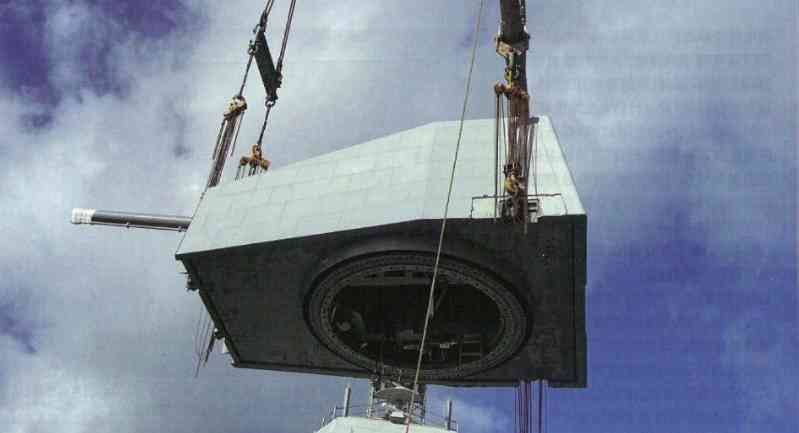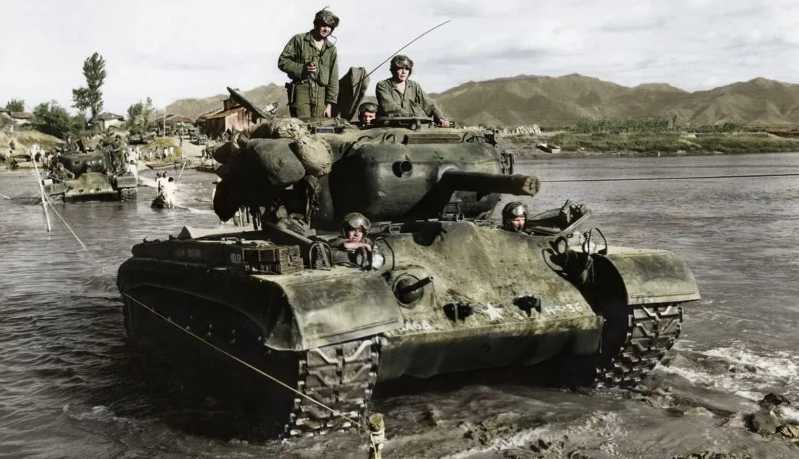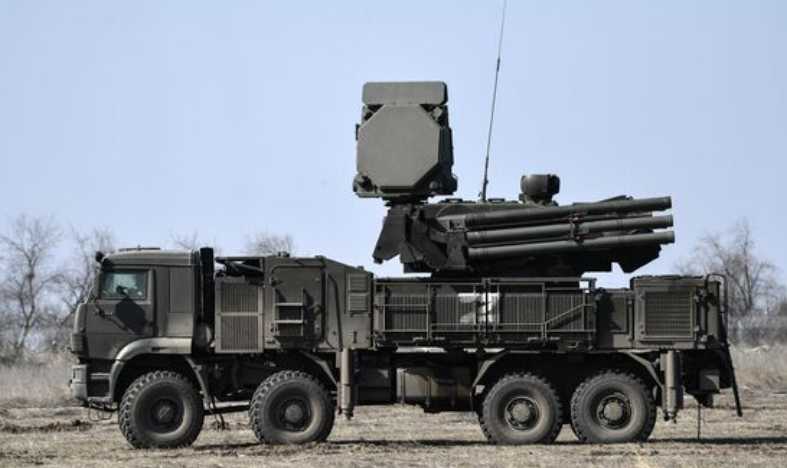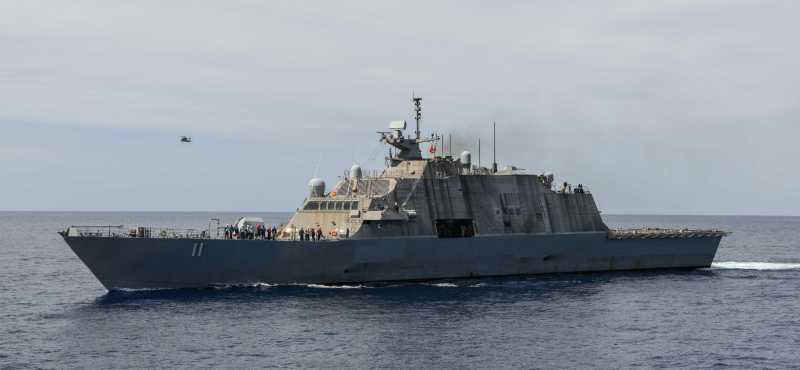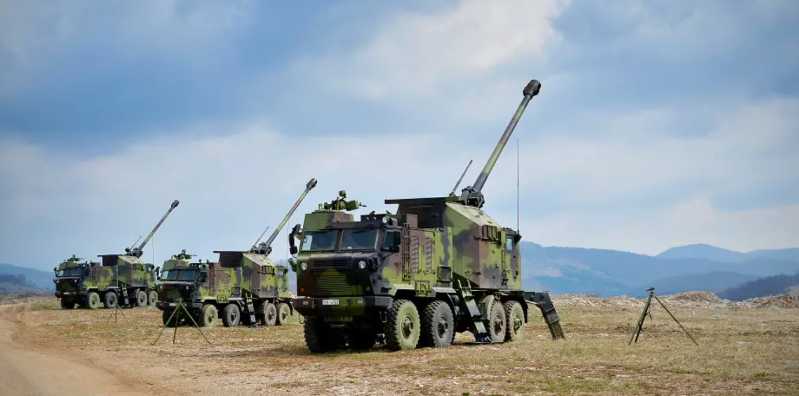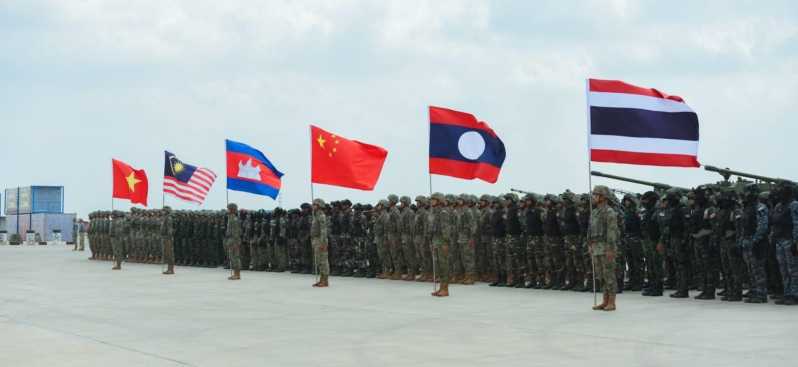In early April 2024, the U.S. Navy Information Warfare Systems Command announced that Project Overmatch had been completed ahead of schedule. Since its implementation in 2020, all parties concerned have been very secretive about this multi-million dollar project that has a wide impact on various combat systems of the U.S. Navy. However, the words of Rear Admiral Douglas Small, commander of the Navy Information Warfare Systems Command, gave a general direction-"Deploying software on existing hardware is the fastest way... Our mantra is: just focus on software." This may also be seen as the main focus of the recent development of the U.S. Navy’s combat system.
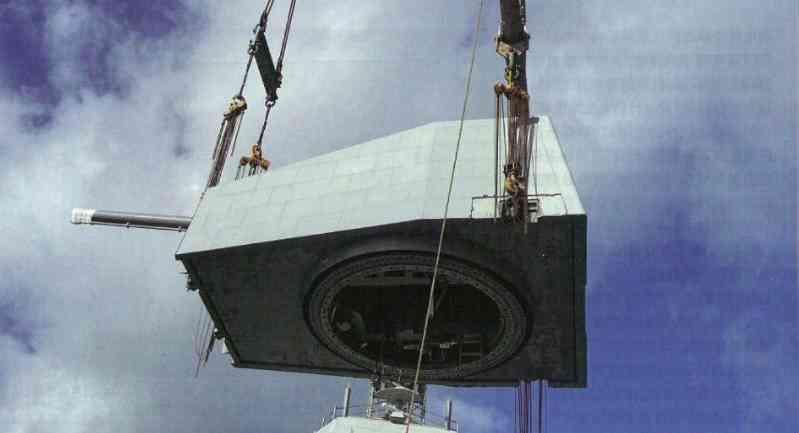
The U.S. Navy is trying to transition from an army composed entirely of large manned platforms to a force with a higher proportion of small manned and unmanned ships, aircraft and submarines. However, since the Navy budget is unlikely to grow significantly in the 2020s, diverting funds to make this transition will initially reduce the size of the U.S. fleet as many surface ships and submarines built during the late Cold War are retired and cannot be replaced one-to-one. By the 2030s, U.S. Navy leaders intend to begin increasing the size of the fleet by entering service with new unmanned ships/aircraft, and to enhance the fleet’s lethality and survivability with supersonic weapons and laser weapons, as well as capabilities developed through the "Beyond Program." The program is the highest priority project in U.S. Navy innovation and aims to create a fleet capable of responding to multiple missions to provide decision-making advantages.
U.S. Navy Strategic and Doctrine Thinking
The U.S. Navy and Marine Corps face increasingly severe challenges, both from major powers such as Russia and from regional threats such as Iran and North Korea, all of which seek to change geopolitical relationships to benefit from them. Despite the economic recession caused by the impact of the new crown epidemic, these potential adversaries continue to strengthen their military capabilities, especially the number and coverage of precision missiles, which can strike U.S. allies and slow or prevent U.S. naval intervention. Weapons on adversary territory, supported by commercial and military surveillance networks in all sectors, can threaten U.S. and allied ships, forces, and aircraft hundreds of miles away.
Russian submarines pose the most obvious threat to U.S. naval forces on the high seas. The Russian Navy is relatively small, but its attack submarines rival those of its American counterparts in quietness, sonar, systems, and weapons. Russian attack submarines can evade U.S. and allied ASW capabilities and attack targets on shore or at sea. Other naval powers have fleets dominated by diesel-electric and air-dependent propulsion (SSP) submarines—but are rapidly modernizing. In a confrontation, the growing fleets of low-noise conventional submarines in these navies may be sufficient to counter ASW.
Faced with a more contested operational environment, the U.S. Navy’s response is the dispersion and mobility described in its Distributed Maritime Operations (DMO) concept, which echoes the U.S. Marine Corps’ Expeditionary Advanced Base Operations (EABO) and Standoff Inside Force (SIF) concepts. These concepts align with the new U.S. joint warfighting concept, which employs “extended maneuver” to disperse forces for increased resilience, aggregate their effects when attacking, and rely on decision support and interoperability tools from the U.S. Department of Defense’s Joint All-Domain Command and Control (JADC2) initiative to create and execute effective force-wide action plans. JADC2 is not a concept or program per se, but rather a coordinated effort across the U.S. military services to improve their ability to connect the best “shooter” sensors to commanders to accomplish assigned missions and provide analysis for decision advantage.
Command and control is the most important aspect of the U.S. Navy’s changing conceptual approach. Distributed ship and corps commanders rely on fleet commanders’ maritime operations centers on shore for intelligence, plans, and instructions - a dependence that will increase during conflict. However, adversaries such as Russia can interfere with long-range communications, and the U.S. Navy must develop command and control processes and architectures that adapt to varying degrees of communications availability rather than trying to build networks that enable fleet commanders to command operations under all wartime conditions. The U.S. Navy is pursuing an agile command, control, and communications (C3) system as part of its Joint All-Domain Command and Control-related experiment "Beyond Program."
U.S. Navy Technology and Innovation Imperatives
The U.S. Navy budget is unlikely to grow significantly. Therefore, concepts such as distributed maritime operations, expeditionary forward base operations, and standoff forces require more distributed operations, which will drive the fleet to become more heterogeneous, incorporating more and more low-cost, less versatile manned and unmanned ships and aircraft to work in conjunction with traditional large multi-purpose platforms.
Project Beyond is the Navy’s top innovation priority, with the goal of integrating an increasingly heterogeneous fleet. Project Convergence, managed by the Naval Information Warfare Systems Command (NAWWAR), includes work to connect existing Department of Defense tactical networks (such as the Cooperative Engagement Capability, Link-16, and Tactical Targeting Network Technology, which have been integrated through the Navy Integrated Fire Control Program) with newer networks (such as the F-35 fighter’s multi-function advanced data link and the Navy’s growing family of unmanned vehicles). Project Beyond also includes the necessary command and control and decision support systems to manage the complexities associated with a more distributed, heterogeneous force and targeted force combination.
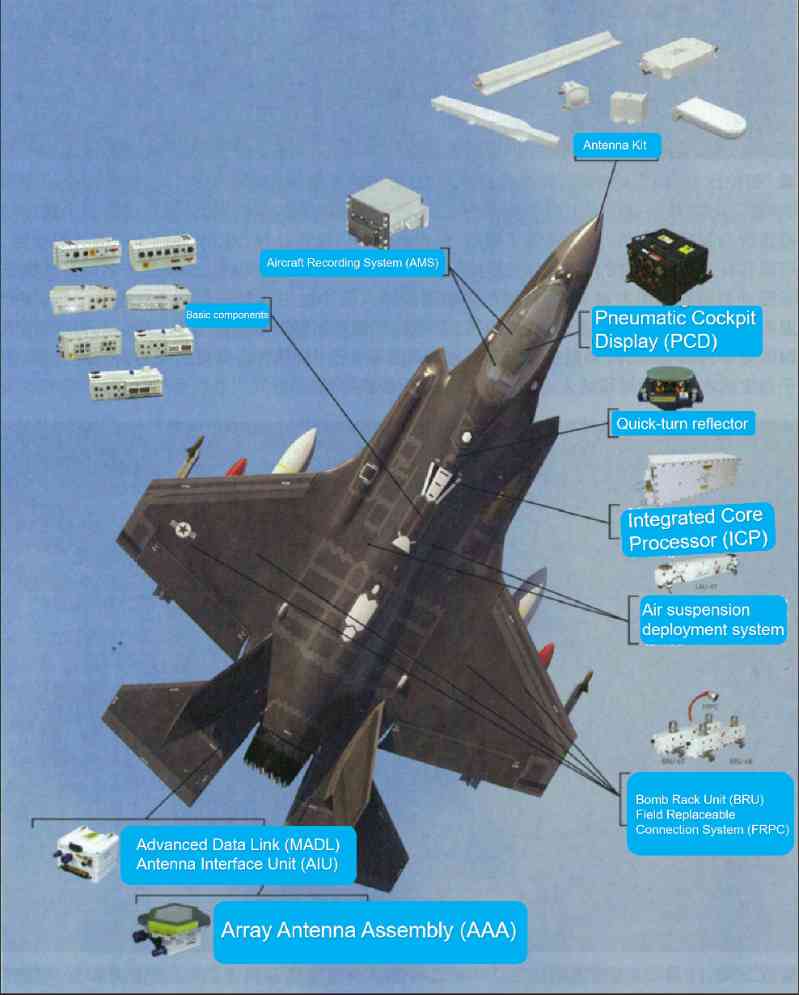
Although command, control, and communications are at the forefront of the Navy’s technological and operational innovation efforts, the service’s top procurement priority is the Columbia-class nuclear-powered ballistic missile submarine. Designed to replace the aging Ohio-class submarines that served during the Cold War, the submarine will combine a variety of new technologies. In addition to using advanced sensors and combat systems developed for the Virginia-class attack submarine program, the Columbia-class will also use electric propulsion and a new humped surface system. The Columbia-class program has been difficult to complete as planned, in part because of the use of new technologies, which has led the Navy to explore various means to extend the service life of the Ohio submarines, which have been extended to 42 years.
The Navy’s surface warfare and air warfare communities are also competing for priority projects on the DDG(X) destroyer and the Next Generation Air Dominance (NGAD) manned and unmanned aircraft, respectively. Scheduled for delivery in the mid-2030s, the DDG(X) will replace the Ticonderoga-class cruisers that are retired this decade. The DDG(X) will improve the Navy’s air defense capabilities with larger vertical launch systems and high-energy lasers, and extend the strike range with boost-glide hypersonic missiles. The Navy is currently pioneering these technologies on existing surface ships, and the FA-XX fighter is scheduled to debut in the late 2030s to replace the Navy’s aging F/A-18/E/F Super Hornet fleet. The FA-XX is a sixth-generation fighter with a longer range and greater survivability than the F-35 and E/A-18. However, in a budget-constrained environment, these projects may not be as high-profile as the Columbia-class nuclear submarine and Joint All-Domain Command.
Evolving systems in the ocean domain
The U.S. Navy’s Constellation-class guided missile frigate project, although not a national priority like the Columbia-class nuclear submarine, has also begun construction, with plans to build at least 20 ships in the next 10 years. The Constellation class will focus on anti-submarine warfare and other escort missions, freeing up the Arleigh Burke-class guided missile destroyers to perform missile defense and strike missions. Since the Constellation class is equipped with CAPTAS-4 towed active low-frequency sonar, it will also be the best platform for the Navy to track enemy low-noise submarines.

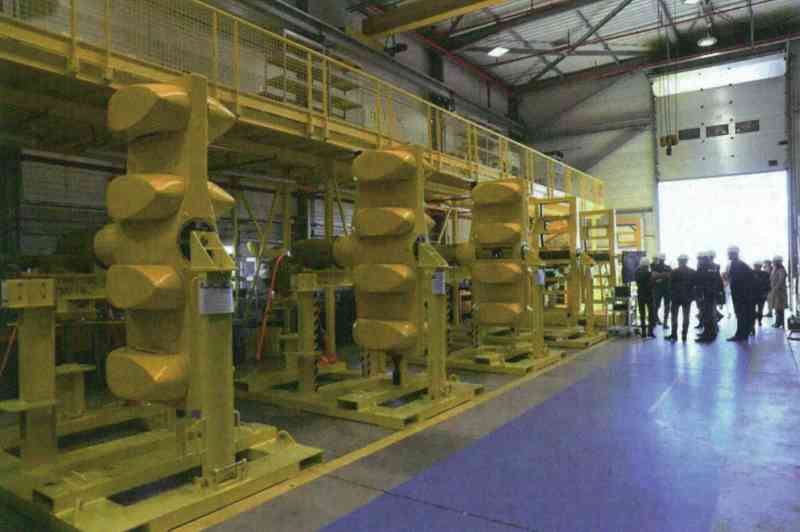
The cost of a guided missile frigate is about half that of a destroyer, and the Navy hopes to use this to ease the Cold War in the 2020s The ability to build more frigates will become even more important if the Navy’s plan to replace the Burke class with a larger, more expensive DDG(X) with hypersonic and laser weapon technology is implemented by the end of this decade.
Since 2015, the U.S. Navy has deployed and tested a prototype Laser Weapon System (LaWS) capable of countering drones on the Ponce Forward Floating Base and the Portland amphibious dock transport ship. The service installed the High Energy Laser and Optical Blinding and Surveillance System (HELIOS) on the USS Preble destroyer in 2022, which can be increased to 120 kilowatts to counter certain missiles or rockets. A longer-term plan, the Navy’s High Energy Laser Weapon Against Anti-Ship Cruise Missiles Project (HELCAP), will develop a 300-kilowatt laser weapon. The Navy’s high-energy laser weapon against anti-ship cruise missiles project, which relies on electrical power rather than surface-to-air missiles, will enhance the missile defense capabilities and survivability of surface combatants and is planned to be installed on certain "Arleigh Burke-class Flight III guided-missile destroyers."
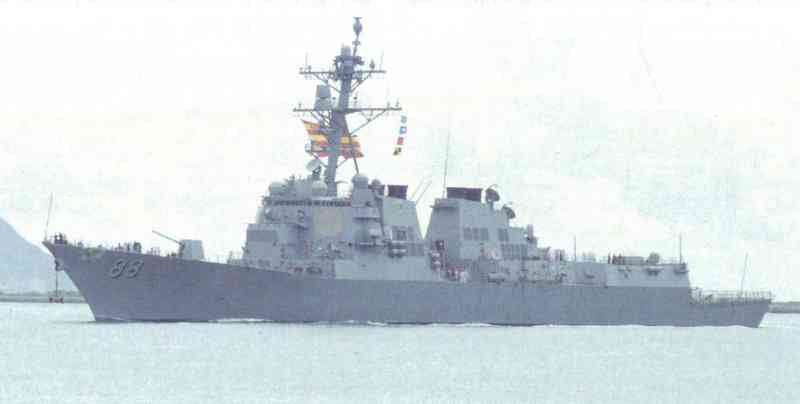
The U.S. Navy is working with the Army to develop a common conventional prompt strike (CPS) hypersonic missile. The Army version will be deployed on mobile land-based launchers, while the Navy intends to install its first batch of conventional prompt strike weapons on three Zumwalt-class guided-missile destroyers by 2025. From 2028, the conventional prompt strike missile will also be deployed on the Virginia-class Block V attack nuclear submarines using the Virginia Payload Module. CPS is a boost-glide weapon that uses a ballistic missile to launch its hypersonic glide vehicle warhead into the upper atmosphere and then fall toward the target, relying on gravity to reach speeds of more than Mach 5, using speed and maneuverability to evade enemy air defenses.
The U.S. Navy is seeking modest improvements in its anti-submarine warfare capabilities. To increase its inventory, the service has resumed production of the proven Mk-48 submarine-launched heavyweight torpedo, with the latest variant using digital sonar processing and improved guidance and control systems. To help submarines fight incoming torpedoes and provide more weapons capacity for anti-submarine aircraft, the Navy has also developed the Compact Rapid Attack Weapon (CRAW), which is about one-third the size of the Mk-54 torpedo carried by surface ships, MH-60R Seahawk helicopters, and P-8A Poseidon fixed-wing anti-submarine aircraft. The MH60R helicopter and P-8A anti-submarine aircraft were discontinued in previous years, but the Navy has no plans to launch new maritime surveillance aircraft before the mid-2030s.

Due to the high procurement and operating costs of surface and underwater manned platforms, US Navy leaders plan to use unmanned vehicles to help build a more distributed fleet that can carry out larger and faster operations than today. To this end, the Navy’s 2021 Unmanned Systems Action Plan will prioritize the development of manned-unmanned combination solutions, the digital infrastructure for managing the operation of unmanned systems, and the procedures for using unmanned systems to solve important operational problems. However, with the exception of intelligence, surveillance and reconnaissance systems such as the RO-21 Blackjack or ScanEagle ship-based drone, the Mk-18 unmanned minesweeping vehicle, the SHARC oceanographic wave glider and the MO-4C Triton large drone, the Navy has been slow to introduce unmanned systems.
After many failed attempts over the past decade, the Navy launched a carrier-based drone program, the MO-25A Stingray, in 2018. Each Stingray tanker can extend the combat range of two carrier-based fighters by about 1,000 nautical miles, taking over the F/A-18E/F Super Hornet fighter jets that are responsible for this task and can be used in combat operations. However, refueling all the fighter/attack aircraft in each carrier air wing requires 15 MO25As, not the 5-9 described in the Navy’s latest plan. While the Navy’s current plan results in only about 10% drones per carrier air wing, naval aviation leaders intend to increase this proportion to 60% by the late 2030s through the next-generation air superiority family of systems.
Underwater, the Navy is seeking four families of systems in different size ranges. The high-end Orca VLU will be launched from a dock or large amphibious ship, but problems encountered during testing are likely to limit its operational range and durability. Therefore, the Navy plans to use it mainly for laying mines and releasing small UUVs, rather than longer surveillance missions. The Navy cut funding for the Snakehead VLU in its fiscal 2023 budget proposal, but it may be restored by the U.S. Congress. The Navy tried to stop work on the large UUV because its deployment plan is to be carried in a dry deck transfer compartment on the back of attack nuclear submarines and cruise missile submarines, which is impractical and conflicts with the needs of the special forces, and the testing of the project has also been delayed.


The Navy has been relatively successful in the medium-sized unmanned submarine program, which is designed to be launched from a ship or torpedo tube. The Mk18 Mod1 and Mod2 have been in service for more than 10 years and will be replaced by the Knifefish medium-sized unmanned submarine. Ultimately, the Razorback medium-sized unmanned submarine will provide a general-purpose medium-sized unmanned submarine platform for minesweeping and other missions, including launching and recovering from submarines using torpedo tubes, conducting intelligence, surveillance and reconnaissance and other missions. However, each medium-sized unmanned underwater vehicle occupies a torpedo compartment, and the submarine force is unlikely to use it extensively. Medium-sized unmanned underwater vehicles will more often be launched from surface ships or shore.
The Lionfish is the Navy’s latest UUV program, with a diameter of about 25.4 cm or less, large enough to be deployed by submarine countermeasures systems, very large UUVs, or even potentially by aircraft sonobuoy launchers. Small UUV missions will include ISR, and they can also serve as sonar decoys or jammers.
As with UUVs, the Navy’s plans to deploy multiple sizes of unmanned surface vessels (USVs) have had mixed results. Large unmanned surface vessels (LUSVs) are being developed that can carry missile pods to reinforce manned surface combatants. The Navy has received four large USV prototypes from the Office of the Secretary of Defense’s Strategic Capabilities Office (OSDSCO), one of which was decommissioned and auctioned in early 2024. Information from prototype testing will inform research on dedicated large USVs being conducted at six design units.
The purpose of the medium unmanned surface vessel (MUSV) is to carry passive radio and infrared sensors, electronic warfare jammers and decoys or illuminating radars to carry out reconnaissance and counter-reconnaissance missions, and to support multi-base detection by manned platforms carrying radar receivers. The U.S. Navy has built three prototype medium unmanned surface vessels for various experiments and exercises. However, Navy leaders said that the results showed that the tasks of medium unmanned surface vessels can be completed more economically by smaller unmanned surface vessels, which may lead to the cancellation or reduction of the project.
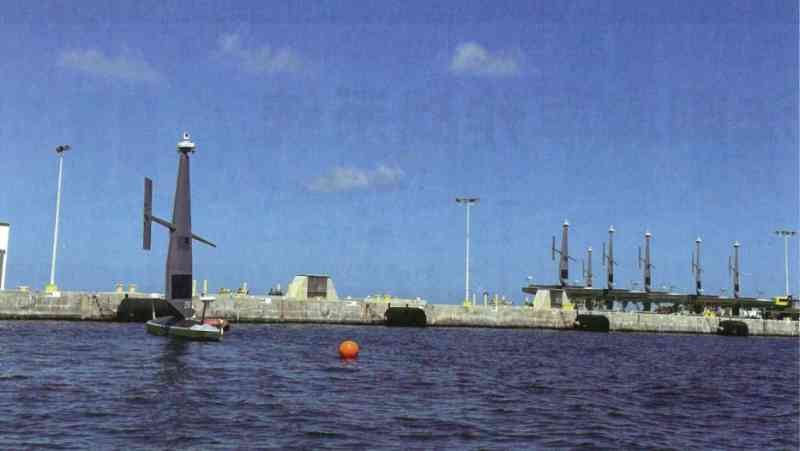

The Navy’s small unmanned surface vessels are mostly experimental, such as the “Saildrone” used by Task Force 59 (TF-59) in the Middle East. While TF-59 may eventually deploy more than 100 unmanned surface vessels in the Persian Gulf, Arabian Sea, and Red Sea, these commercial systems lack the sensors and advanced signal intelligence equipment of military ships, such as the wireless communications or sonar arrays. Therefore, the unmanned force of TF 59 may be a good fit in the Middle East, but it is only a special case and not an approach that the Navy can replicate elsewhere, such as in the Atlantic or Western Pacific. The small minesweeping unmanned surface vessel has achieved initial operational capability in 2022 and is the Navy’s only formal unmanned surface vessel program. Although the latest Initially designed for towed sensor-based minesweeping systems, small minesweeping unmanned surface vessels may also be used for ISR, EW or other missions in the future.
Despite the challenges in deploying unmanned vehicles, the U.S. Navy is likely to acquire more than a dozen MUSV and LUSV prototypes by 2030. Formal plans for each platform will be finalized in the mid-2020s, with the Orca VLUSV, Razorback MLUSV and Lionfish SLUSV programs already underway in 2022. According to the Navy’s most recent shipbuilding plan, the service will deploy 89 to 149 unmanned vessels by 2045, but the specific mix will depend on technical and operational considerations as the program progresses.
How to solve multi-domain and command and control communication problems
As a multi-domain service, almost all platforms of the U.S. Navy have cross-domain influence. For example, attack submarines are now deploying electronic warfare systems that affect the electromagnetic spectrum, as well as missiles that attack targets at sea or on shore. Aircraft such as the P-8A launch and control multi-static active coherent (MAC) systems that can detect and track the most powerful enemy submarines. Frigates and guided missile destroyers can conduct anti-submarine warfare, air defense, and strike operations.
In addition to the hypersonic rapid global strike missile, the U.S. Navy surface forces are seeking to upgrade the Tomahawk land attack missile and the Standard-6 air defense interceptor missile to enable them to carry out maritime strikes. The submarine force also plans to use upgraded Maritime Strike Tomahawk missiles to enable long-range anti-ship attacks from their vertical launch tubes. Between now and the 2030s, the surface force plans to develop a surface attack weapon to replace the Cold War-era Harpoon anti-ship missile and to complement the Tomahawk and Standard Missile-6 missiles.
With the Navy’s various systems operating in the air, on the water, under the water, and on land, its C3 architecture and processes are critical to cross-domain connectivity and coordination capabilities. The service’s efforts in the Beyond Program will expand its C3 capabilities to the growing number and variety of force combinations and address the challenges fleet commanders face in their operations. Supporting efforts such as the Rapid Autonomous Integration Laboratory (RAIL) will build a digital infrastructure to coordinate unmanned systems across domains, in some cases using common control systems. If Navy leaders are to achieve their vision of a larger, increasingly unmanned fleet, the combination of C3 capabilities and automation will be essential.


